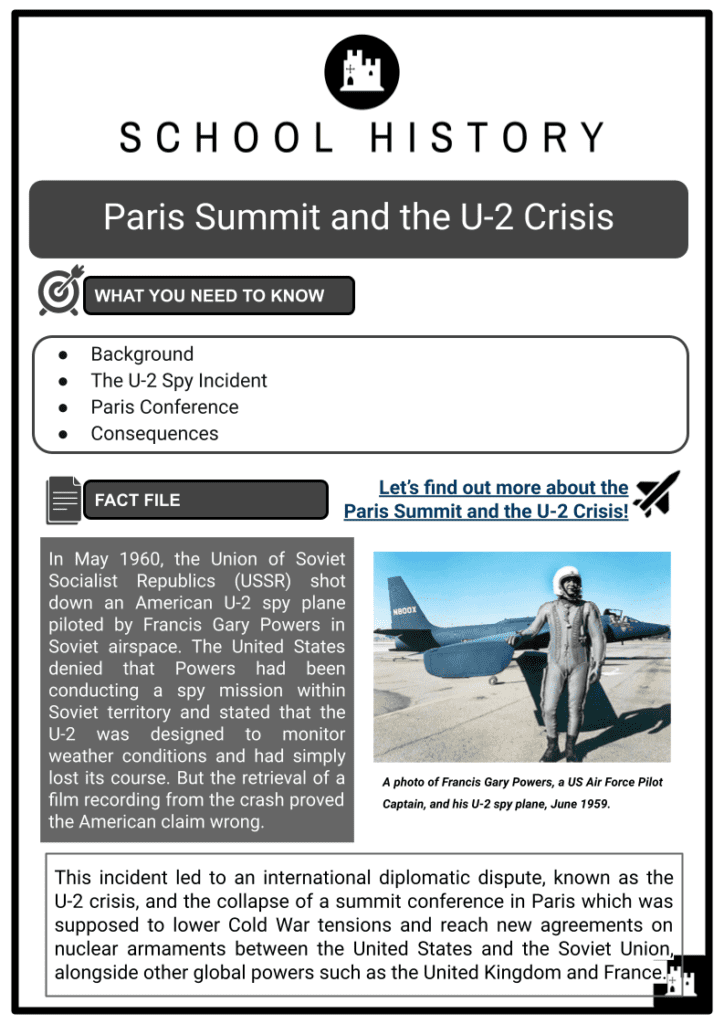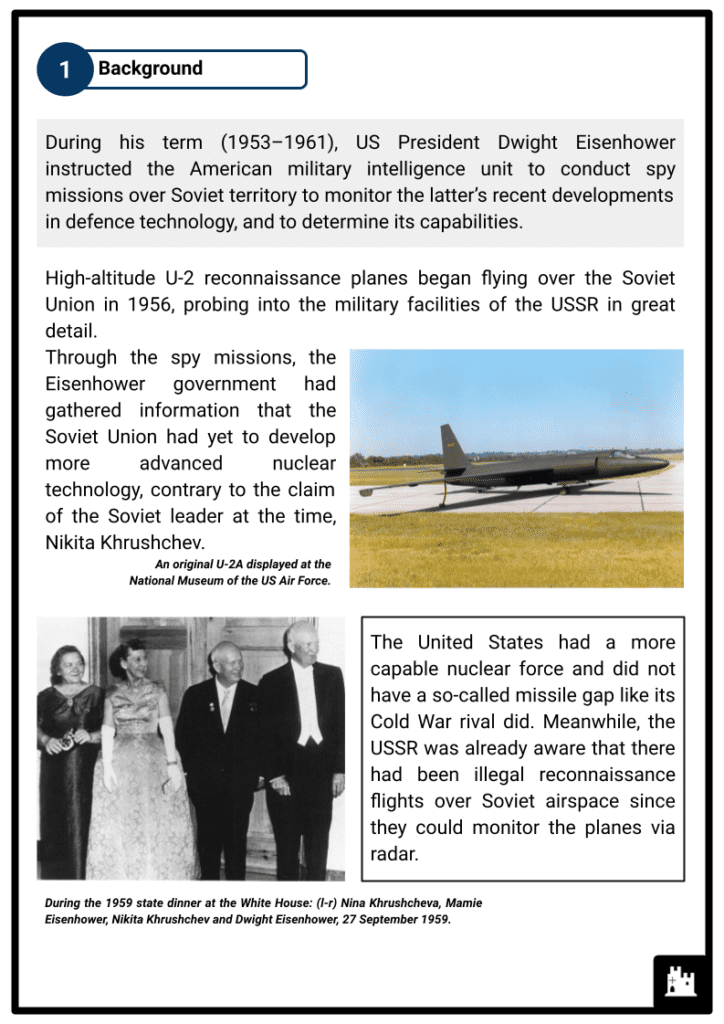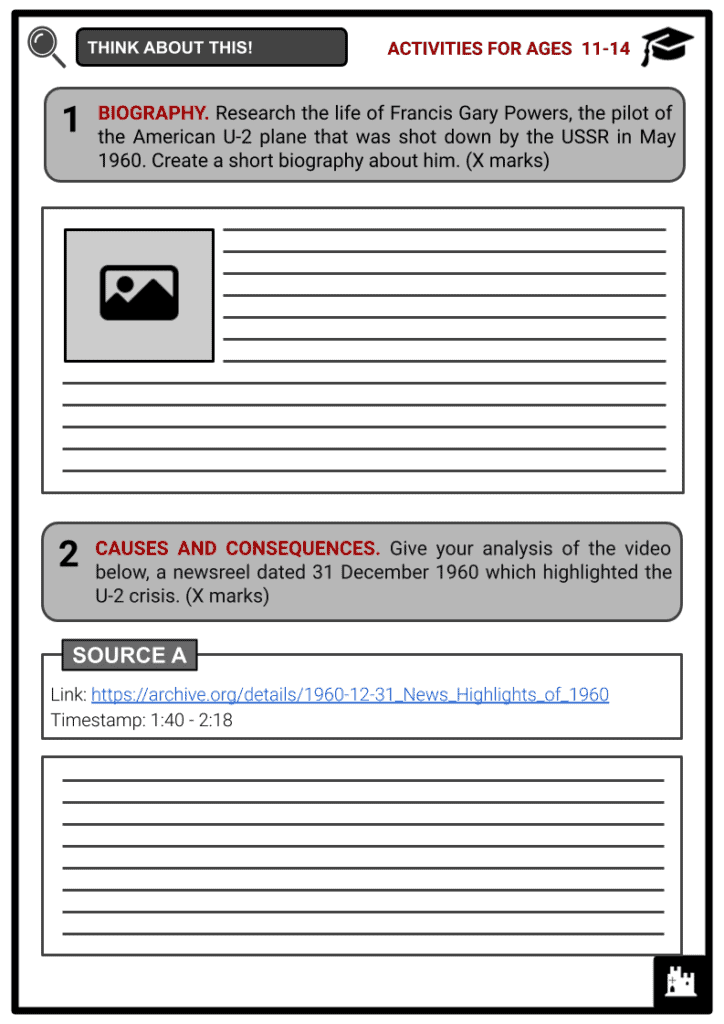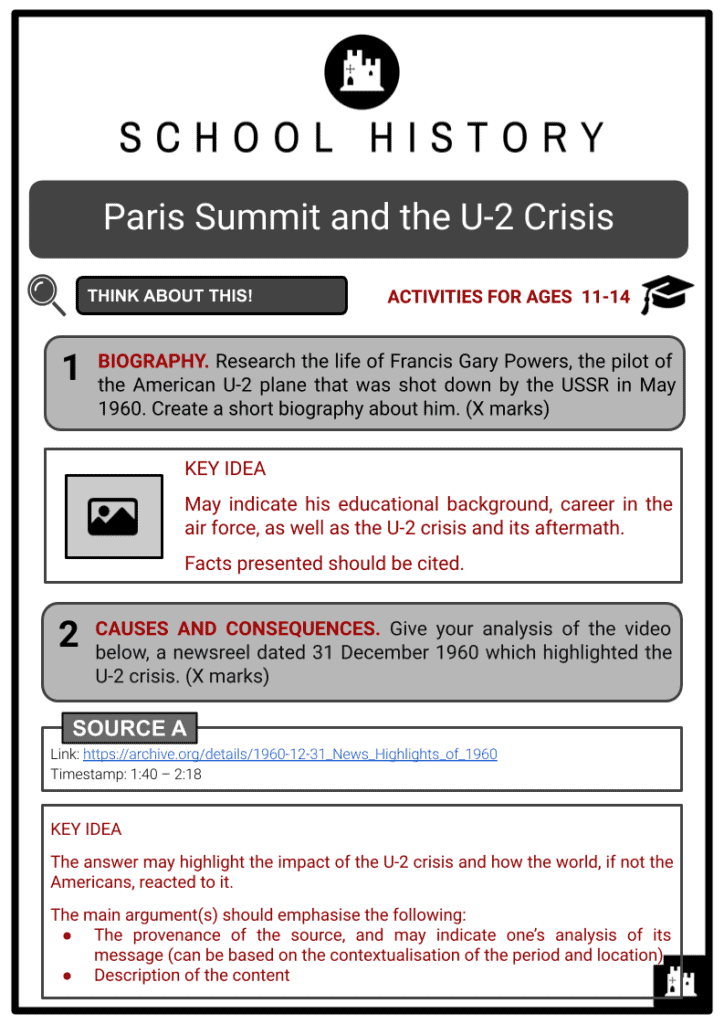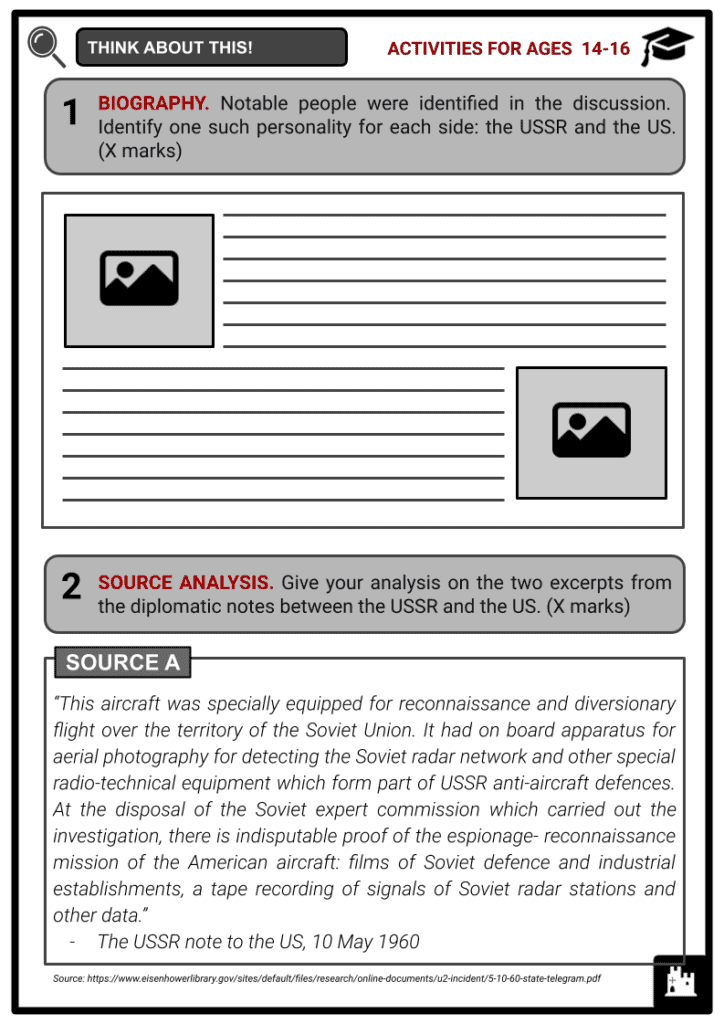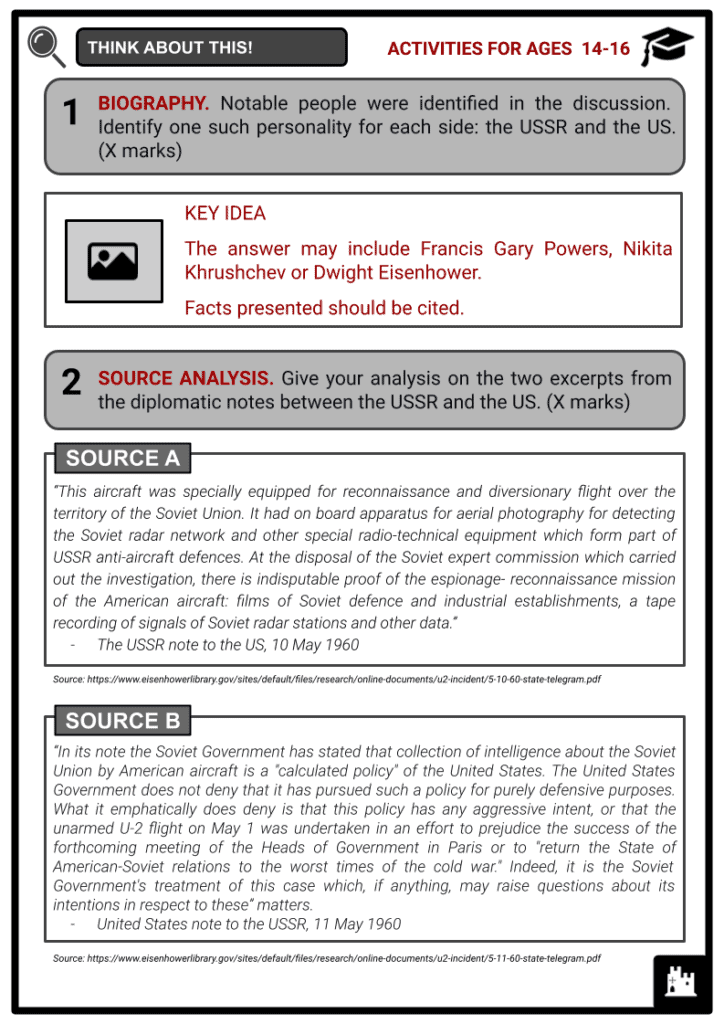Paris Summit and the U-2 Crisis Worksheets
Do you want to save dozens of hours in time? Get your evenings and weekends back? Be able to teach about the Paris Summit and the U-2 Crisis to your students?
Our worksheet bundle includes a fact file and printable worksheets and student activities. Perfect for both the classroom and homeschooling!
Summary
- Background
- The U-2 Spy Incident
- Paris Conference
- Consequences
Key Facts And Information
Let’s find out more about the Paris Summit and the U-2 Crisis!
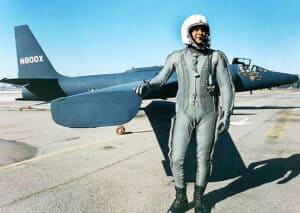
In May 1960, the Union of Soviet Socialist Republics (USSR) shot down an American U-2 spy plane piloted by Francis Gary Powers in Soviet airspace. The United States denied that Powers had been conducting a spy mission within Soviet territory and stated that the U-2 was designed to monitor weather conditions and had simply lost its course. But the retrieval of a film recording from the crash proved the American claim wrong.
This incident led to an international diplomatic dispute, known as the U-2 crisis, and the collapse of a summit conference in Paris which was supposed to lower Cold War tensions and reach new agreements on nuclear armaments between the United States and the Soviet Union, alongside other global powers such as the United Kingdom and France.
Background
- During his term (1953–1961), US President Dwight Eisenhower instructed the American military intelligence unit to conduct spy missions over Soviet territory to monitor the latter’s recent developments in defence technology, and to determine its capabilities.
- High-altitude U-2 reconnaissance planes began flying over the Soviet Union in 1956, probing into the military facilities of the USSR in great detail. Through the spy missions, the Eisenhower government had gathered information that the Soviet Union had yet to develop more advanced nuclear technology, contrary to the claim of the Soviet leader at the time, Nikita Khrushchev.
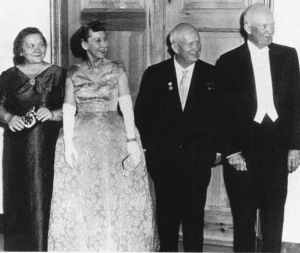
During the 1959 state dinner at the White House: (l-r) Nina Khrushcheva, Mamie Eisenhower, Nikita Khrushchev and Dwight Eisenhower, 27 September 1959. - The United States had a more capable nuclear force and did not have a so-called missile gap like its Cold War rival did. Meanwhile, the USSR was already aware that there had been illegal reconnaissance flights over Soviet airspace since they could monitor the planes via radar.
- It took the USSR four years to act on the spy missions because the Soviet jets and missiles still could not reach the altitude of the U-2 spy planes, preventing them from being shot down at the time.
The U-2 Spy Incident
- In May 1960, 13 days before the opening of the Paris Peace Summit, a United States U-2 spy plane piloted by Gary Powers was shot down by the USSR in Soviet territory.
- A shift in the situation was felt following the Soviets’ development of a more advanced surface-to-air missile that could handle a longer range. Using the said weapon, the Soviet Union successfully shot down an American U-2 spy aircraft piloted by Central Intelligence Agency (CIA) agent Francis Gary Powers on 1 May 1960.
- Powers was an expert in spy missions. He flew the U-2 reconnaissance plane over Soviet airspace to take photographs of the military facilities set up in the USSR. The mission should have lasted nine hours, during which Powers would reach Pakistan and land in Norway.
- However, while flying over Sverdlovsk (now known as Yekaterinburg, Russia), the newly developed Soviet missile exploded close to his aircraft, leading it to a much lower altitude. But what brought down the U-2 spy plane was a second missile that directly locked onto it. Powers attempted to escape using a parachute, only to be cornered by Soviet authorities.
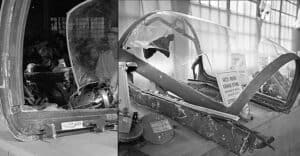
Remnants of the American U-2 spy plane piloted by CIA agent Francis Gary Powers which was shot down by the Soviet Union on 1 May 1960. - On 5 May 1960, the Soviet Union publicised the spy incident but did not disclose the capture of Powers. Following this, the Eisenhower government was confident that there was no evidence of espionage gathered from the crash, so claimed that the U-2 was just a weather-monitoring plane that had lost its way.
- To the surprise of the Americans, the Soviets released a photograph of the captured CIA agent and a film recording retrieved from the crash which indicated that Powers had been conducting a surveillance mission.
Paris Conference
- In May 1960, the Paris Peace Summit was planned to discuss the nuclear weapons test ban treaty, the status of Berlin, as well as the revolution in Cuba. This meeting would have been the first sit-down meeting between the USA and the USSR since the end of WWII.
- The U-2 spy plane incident happened 13 days before the scheduled meeting of Eisenhower and Khrushchev, alongside the officials of the United Kingdom and France, at a summit conference in Paris.
- The summit was an important meeting designed to address the tension between the United States and the Soviet Union and settle new agreements concerning military developments.
- In particular, the Paris summit was supposed to pass a Test Ban Treaty to reduce the production and testing of nuclear weapons. It was also meant to discuss the situation in Berlin since the Soviet Union was frustrated by the rapid exodus of East Germans to West Germany. This was before the establishment of the Berlin Wall which would later divide Germany. Moreover, the conference was to settle the ongoing revolutions in Cuba which the Americans claimed would lead to a communist government.
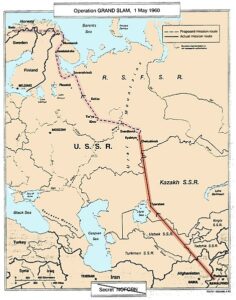
The May 1960 U-2 flight plan under the operation 'Grand Slam' from the CIA publication The Central Intelligence Agency and Overhead Reconnaissance; The U-2 And Oxcart Programs, 1954–1974 which was declassified on 25 June 2013. - The summit failed as no treaties were created and the status of Berlin and Cuba was not discussed. The relationship between the US and the USSR sharply deteriorated, which worsened the Cold War.
Consequences
- Due to the implicating evidence brought forward by the Soviet Union, Eisenhower had no choice but to take responsibility for the reconnaissance plane. The American president admitted that the US government, through the CIA, had been conducting spy missions over Soviet territory for several years.
- On 13 May 1960, the Soviet Union delivered protest papers to Turkey, Pakistan and Norway, which in turn demanded a guarantee from the United States that no American plane would be permitted to conduct surveillance missions within their territories. Following this, Khrushchev stated that he could no longer take part in the Paris conference. The Soviet official walked out of the summit a few hours after it had commenced. Because of the incident, the Paris meeting yielded no substantial results. No agreement on a Test Ban Treaty was settled.
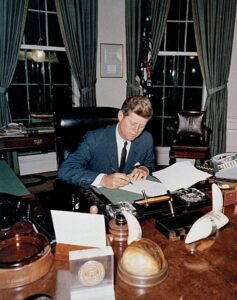
An image of Kennedy signing the Proclamation for Interdiction of the Delivery of Offensive Weapons to Cuba in the Oval Office, 23 October 1962. - The issues regarding Berlin and Cuba also remained unresolved, which would later exacerbate the Cold War tension and lead John F Kennedy, Eisenhower’s successor, to carry a strong anti-communist campaign in the 1960 US presidential elections.
- The imprisoned Powers, meanwhile, went on a trial for espionage in August 1960. He was then found guilty and sentenced to 10 years in jail. However, on 10 February 1962, only two years into his sentence, Powers was released as part of a negotiation, which would also see the release of captured Soviet agent Rudolf Ivanovich Abel, in what became known as the first so-called spy swap between the United States and the Soviet Union.
- Consequently, Powers returned to the US and left the CIA, and went on to work as a helicopter pilot for a television network in Los Angeles. Following a helicopter crash in 1977, Powers died at age 47. His body was buried at Arlington National Cemetery.
Image Sources
- https://commons.wikimedia.org/wiki/File:Летчик_Фрэнсис_Гэри_Пауэрс_у_американского_высотного_самолета_У-2.jpg
- https://commons.wikimedia.org/wiki/File:Dwight_Eisenhower_Nikita_Khrushchev_and_their_wives_at_state_dinner_1959.png
- https://commons.wikimedia.org/wiki/File:RIAN_archive_35168_Wreckage_of_Downed_American_Reconnaissance_Plane.jpg
- https://commons.wikimedia.org/wiki/File:OperationGrandSlam1960.jpg
- https://commons.wikimedia.org/wiki/File:President_Kennedy_-_signing_Cuba_Quarantine_Proclamation.jpg

